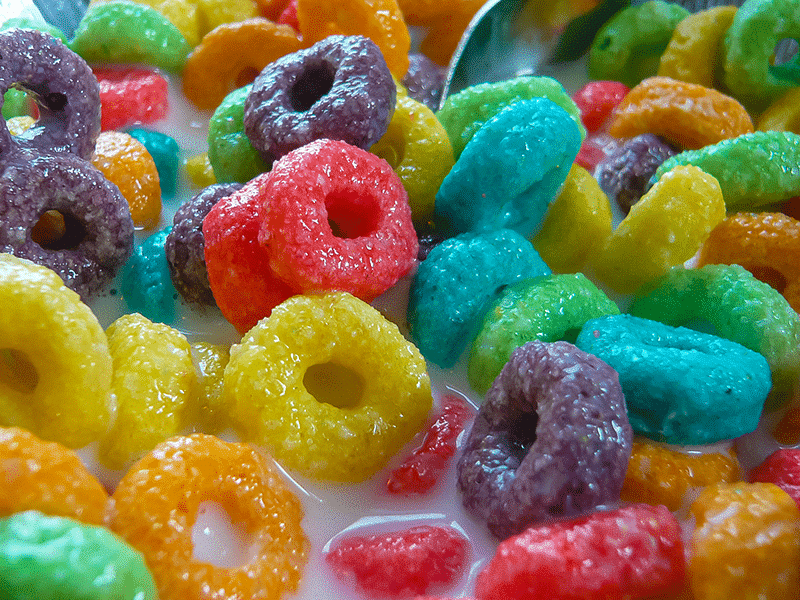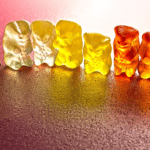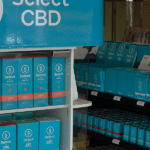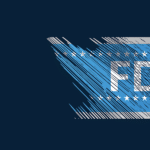Is there a doctor in the house? The Food and Drug Administration (FDA) is ailing and needs some serious attention.
The FDA has got a bad case of CBD – as in Chronic Bureaucratic Dysfunction. This affliction has been evident for some time, but the symptoms are getting worse.
The FDA can’t figure out how to regulate CBD, short for cannabidiol, the all-star cannabis compound with formidable therapeutic properties that won’t make a person feel high. Although it doesn’t cause intoxication or impairment, cannabidiol has completely befuddled FDA officials, who aren’t able to scale with the magnitude of CBD’s meteoric rise in popularity.
CBD has scrambled the prohibitionist narrative. It has disordered the FDA’s cosmos. Over 64 million (one in seven) Americans have thumbed their nose at the FDA by choosing to use a CBD product. Many are taking CBD for medical conditions that don’t respond well to FDA-approved pharmaceuticals.
The FDA is responsible for ensuring that everything we eat or drink, every drug we take to feel better, is safe (and supposedly effective). But there’s no precedent for regulating a substance so versatile that it works as a single-molecule pharmaceutical, a wellness nutraceutical, an essential oil extract, and an artisanal herbal preparation that can be ingested as food or beverage, inhaled as vapor or smoke, or absorbed sublingually and applied topically in various ways. Such is the case with CBD.
So, the FDA does what it always does. It reverts reflexively to old bureaucratic habits. The FDA only recognizes the medical utility of isolated components of cannabis. Single-molecule CBD is an FDA-approved prescription pharmaceutical. So is single molecule tetrahydrocannabinol (THC). But herbal cannabis, the natural source of CBD and THC, isn’t an FDA-approved therapy. Full spectrum, CBD-rich essential oils extracted from resinous cannabis flower tops are frowned upon by the FDA, which routinely privileges pharma over farmer.
Bad Advice
The FDA recently reiterated its official disapproval of nonpharmaceutical uses of cannabidiol in an updated Consumer Advisory that generated alarmist headlines about the perils of CBD. The FDA also dispatched blunt warning letters to 15 CBD companies, taking them to task for making unproven medical claims and mislabeling the amount of cannabidiol in their products.
It wasn’t the first time that the FDA slapped the wrist of CBD businesses or wagged a finger at self-medicating consumers. But the latest FDA missives were less nuanced and more strident than before – with stark language about liver injury and other dangers allegedly attributable to CBD, including male reproductive toxicity, stomach upset, and interactions with different drugs.
In the world according to the FDA, CBD is not a safe substance and it is not a legitimate dietary ingredient or supplement for people or pets. “CBD has the potential to harm you,” the FDA declared, noting that is it “has seen only limited data about CBD safety and these data point to real risks that need to be considered before taking CBD for any reason.”
Investors moaned, vendors vented, and consumers scratched their heads.
Is More Research Needed?
The FDA claims that it lacks sufficient scientific data on CBD’s effects to move forward with CBD regulation. What’s more, according to the Foot Dragging Administration, it could take years to sort out the pros and cons of CBD.
How often have we heard the same refrain – “more research is needed” – from recalcitrant officials who prefer to see no change in policies that should be guided by science? “From climate denial to cannabis prohibition, the demand for absolute scientific certainty is a call for inaction,” says Adrian-Devitt Lee, Project CBD’s chief science writer. “It begs the question: When is there ‘enough’ research? How about not enough to eliminate all uncertainties, but enough to recommend a medical treatment or a change in policy?”
Actually, CBD has been the focus of extensive scientific inquiry. Medical researchers already know a great deal about this remarkable botanical compound. In 2017, a Mayo Clinic investigator noted that CBD, a potent antioxidant, acts through 65 different molecular channels in the human brain and body, and since then at least a dozen more CBD pathways have been identified. Preclinical studies underscore CBD’s therapeutic potential for numerous conditions.
To date, there has been no evidence of public health-related problems directly attributable to the widespread use of cannabidiol. A 2018 report by the World Health Organization concluded that CBD “is generally well-tolerated with a good safety profile [and] exhibits no effects indicative of any abuse or dependence potential.” But the FDA stubbornly insists that it is not aware of any basis to conclude that CBD is GRAS [Generally Recognized as Safe] among qualified experts.
The FDA Sees What It Wants to See
The FDA is desperately – and disingenuously – seeking harm, inflating the dangers of CBD and minimizing benefits. Why? The problem is political, not pharmacological. Since June 2018, CBD has been approved in the United States as a prescription pharmaceutical, known as Epidiolex, for two severe pediatric seizure disorders. Therefore, according to standard pro-pharma FDA policy, CBD can’t also be marketed as a food supplement or an over-the-counter remedy.
Safety data pertaining to Epidiolex, produced by GW Pharmaceuticals, has figured prominently in the FDA’s evaluation of CBD. Cannabidiol comprises 98% of the cannabinoid content in Epidiolex, an artificially sweetened, ethanol-based, CBD-infused tincture.
Whereas Epidiolex can cause adverse side effects when administered in large doses, there is little, if any, evidence that shows CBD, at any dose, is harmful to human beings who are not also taking another drug. This does not mean that a CBD isolate is perfectly safe or a smart medical choice; it only means that the current scientific literature does not validate the FDA’s contention that CBD is dangerous.
In its recent Consumer Advisory, the FDA rattled off several undesirable side effects of CBD, including diarrhea, drowsiness, changes in mood (irritability, agitation), and liver damage. While it’s true that ten percent of epileptic children, when administered Epidiolex in clinical trials, experienced adverse events, the FDA fails to make the case that these side effects were actually caused by CBD:
- Gastrointestinal distress. Diarrhea, loose stool, and other symptoms of GI distress are the most common side effects of Epidiolex, which is laced with sucralose, the ubiquitous artificial sweetener marketed under the brand name Splenda. According to several reports, incuding a 2017 study by Japanese scientists in Nutrients, sucralose alters gut microflora in ways that foster dysbiosis, blood sugar imbalances, and an overall, unhealthy metabolism. Other studies indicate that sucralose causes leukemia and liver damage in lab animals, prompting the Center for Science in the Public Interest to warn people not to consume sucralose. Why is this toxic, gut-disturbing compound allowed in our food supply? And why is sucralose an FDA-approved ingredient in a pharmaceutical preparation for children with seizures?
- Irritability and agitation. It’s not surprising that an ill child on several medications would become moody or agitated if given repeated doses of drug that causes gut dysbiosis. CBD, an anti-inflammatory painkiller, does not foster unhealthy bacterial growth in the microbiome.
- Somnolence. A small dose of CBD can induce wakefulness and insomnia, while a large dose, like the amount utilized in the Epidiolex trials, can have a sedating effect. CBD combined with alcohol or other central nervous system depressants “increases the risk of sedation and drowsiness,” according to the FDA. Of course, most drugs shouldn’t be mixed with alcohol. How, then, did the FDA determine the allowable limit of ethanol exposure for a neurologically compromised child on a high-dose regimen of Epidiolex, which includes ethanol as a carrier ingredient?
What About the Liver?
Drug-induced injury is a major cause of liver failure in the United States. Alcohol, high fructose corn syrup, NSAIDs and other widely consumed over-the-counter products are major culprits. That hasn’t stopped the FDA from green-lighting these products. But in the world according to the FDA, CBD is just too risky for Americans, who’ve been putting their livers at risk a long time thanks to unhealthy FDA regulatory policies.
Based on the Epidiolex data, the FDA asserts: “CBD can cause liver injury.” Indeed, there were problems in some cases when very high doses of Epidiolex were given to severely ill patients who were also taking other anti-epileptic medications that have toxic profiles of their own. All the Epidiolex test subjects suffered from refractory seizures, which means they had already tried several anti-epileptic medications that failed to quell their seizures.
Sometimes combining different meds can have positive results, but drug interactions must be carefully managed by a health professional. At high doses, CBD may interact with numerous pharmaceuticals, including harsh anti-epileptic drugs such as clobazam. That’s what the Epidiolex data showed: CBD can increase blood levels of clobazam by inhibiting its metabolism – and clobazam is a potent benzodiazepine that can cause a lethal overdose by depressing respiratory function. Thus, it was necessary for doctors to adjust the amount of clobazam given to Epidiolex patients, who were on a high-dose CBD regimen.
Long-term use of valproate, another anti-epileptic drug, is known to cause symptoms of liver toxicity. Although valproate and CBD don’t appear to interact metabolically, it’s conceivable (but not proven) that in combination they might put additional stress on the liver. Despite such concerns, researchers have found that the combination of CBD and valproate can be a very effective anti-convulsant treatment for some patients when nothing else helps.
The FDA’s recent Consumer Advisory neglected to mention animal studies that indicate CBD has a positive impact on liver function by inhibiting fibrosis and protecting against alcohol toxicity. According to a 2019 report by Israeli scientists in Frontiers in Pharmacology, CBD enhances the effects of doxorubicin, a chemotherapy drug used to treat liver cancer and other malignancies. And a 2019 longitudinal study by Spanish researchers found that people with a history of cannabis use are less likely to develop fatty liver disease than cannabis abstainers.
The Fully Discredited Administration
“We treat substances derived from cannabis just like we do any other substances,” says the FDA, which purports to favor a “rigorous science-based approach [to] products containing cannabis or cannabis-derived compounds, including cannabidiol.”
The sheer mendacity of such pronouncements is striking even for “the Fully Discredited Administration.” That’s how medical marijuana pioneer Tod Mikuriya, MD, referred to the FDA, which has long since forfeited any claim to credibility with respect to cannabis.
In the world according to the FDA, any cannabis cultivar with more than 0.3 percent THC is a dangerous drug with no medical value and any CBD-rich oil extracted from such a plant is an illegal Schedule One substance. But the hemp-derived CBD present in Epidiolex is a legal Schedule Five substance, the safest (non-OTC) designation possible. The fact that CBD is officially both a Schedule One substance and Schedule Five substance is symptomatic of a deeply flawed drug policy mired in contradiction, rather than a policy informed by a “rigorous science-based approach” to public health.
The FDA’s Double Standard
As for treating CBD like any other substance – a brazen double standard is evident. Compare the FDA’s assessment of animal experiments with CBD to how the FDA responds when preclinical (and clinical) research questions the safety of widely available FDA-approved food ingredients. A plethora of toxic food additives (corn syrup, emulsifiers, nitrates and nitrites, artificial sweeteners and colors, phony flavors and textures …) gets a free pass from the FDA, which turns a blind eye to scientific data showing harm from processed food. But when a single study, in which a mega-dose of cannabidiol is injected into mice, hints at possible harm, that’s flagged by the FDA as proof you can’t trust your health with CBD.
Extrapolating from animal studies to humans – or choosing not to – is a tricky business, given that mice and people metabolize CBD differently and inconsistent findings result from different experimental designs. The FDA likes to have it both ways, ignoring animal data that shows sucralose is harmful, to cite but one example, while emphasizing animal data that casts the slightest aspersion on CBD’s safety.
Although there’s little evidence that CBD is a factor in the declining sperm counts of American men, the FDA’s recent Consumer Advisory raised the specter of CBD-induced “male reproductive toxicity” by referencing a 1986 study, which examined whether plant cannabinoids had a negative impact on the fertility of male mice. Curiously, this study seemed to exonerate THC: “Males exposed to … THC appeared to have spermatozoa in number comparable to controls.” But a large dose of CBD, unlike THC, “reduced the percentage of successful impregnations by cannabinoid-exposed males.”
Dosing High & Low
The FDA also likes to have it both ways when interpreting clinical data from the Epidiolex trials, in which patients were given huge doses – up to 20 mg per kg of body weight – of CBD in addition to various anti-epileptic meds. When problems arose, the FDA blamed CBD, even though Epidiolex also contains noxious ingredients (ethanol, sucralose) and adverse reactions may stem from interactions with other drugs.
So, when there’s harm the FDA views Epidiolex as equivalent to CBD. But when there are benefits, such as less frequent and less intense seizures, that’s not because of generic CBD. It’s because of Epidiolex, a unique, FDA-approved pharmaceutical – unlike nonpharmaceutical CBD products, which, by definition, lack therapeutic value because they don’t have the FDA’s seal of approval.
The FDA cites potential adverse effects from CBD but does not distinguish between the huge doses administered to Epidiolex patients and the small amount of CBD – 5 to 25 mg – typically present in unregulated supplements. By comparison, the recommended dose of Epidiolex would be equivalent to a 150-pound adult taking as much as 1400 mgs of CBD daily, which is way more than the real-world experience of the vast majority of CBD consumers. And that makes a big difference. Drug interactions are much more likely if one consumes large doses of a CBD isolate. But that’s not what most people are taking. The unregulated CBD market and licensed medical cannabis markets are awash in oil extracts that contain a full spectrum of cannabis components, including a tiny amount of THC, in addition to CBD.
A 2018 meta-analysis evaluated the efficacy of CBD isolates and CBD-rich oil concentrates for treating epilepsy. (Epidiolex and some unregulated, hemp-derived CBD products are considered isolates, as they lack the full range of cannabinoids and terpenes that are present in whole-plant extracts.) Conducted by Brazilian scientists, this meta-analysis found that single-molecule CBD and artisanal CBD-rich oil extracts were both effective for certain kinds of epilepsy, but the full spectrum extracts had a wider therapeutic window and generally produced better results than the CBD isolates. Perhaps the most salient finding was the dramatic difference in requisite doses for isolates compared to full spectrum CBD-rich extracts. As the main ingredient in a full spectrum extract, cannabidiol was four times more potent than an equal amount of CBD in an isolate. And that means one would need much less CBD from a whole plant oil extract to achieve a desired result.
The FDA Consumer Advisory rang alarm bells about cumulative exposure to unregulated CBD products: “How much is safe to consume in a day?” “What happens if you eat food with CBD in it, use CBD-infused skin cream and take other CBD-based products on the same day?” “What if you use these products daily for a week or a month?” Of particular concern: How will long-term exposure to CBD impact “special populations,” such as children, pregnant women, and seniors?
Mislabeled CBD Products
In the world according to the FDA, too much CBD is a major looming problem. But in the real world, where millions of people are actually using CBD, too little may be more of an issue than too much. More often than not, according to several surveys, the amount of cannabidiol present in a hemp-derived CBD product does not match the amount of CBD indicated on the label – and among mislabeled products, most contained less CBD than promised. Some products had no CBD in them at all.
While fears of overexposure are overblown, the FDA has raised valid concerns about quality control within the unregulated CBD market. “Some CBD products are being marketed with unproven medical claims and are of unknown quality,” the FDA cautioned.
Pesticide and solvent residues, along with toxic additives and other contaminants, plague the fledgling CBD industry. But these problems persist largely because the FDA has abdicated its responsibility to regulate a popular wellness supplement. The FDA’s inaction with respect to CBD, the big regulatory stall, has facilitated the rapid growth of the unregulated marketplace that the FDA abhors.
Conjuring Harm
As 2019 drew to a close, the FDA ratcheted-up the fear mongering. Although CBD doesn’t damage DNA and is neither mutagenic or tetargenic, the FDA warned women not to use CBD while pregnant or breastfeeding. (“What is the effect of CBD on the developing brain?” the FDA asked forebodingly.) Pet-owners were urged to steer clear of CBD-infused pet food.
And then came clincher: The FDA issued a bulletin on Dec. 18, 2019, warning people not to drive a motor vehicle under the influence of CBD! It bears repeating that CBD is not intoxicating, does not cause a high, does not impair coordination or perception, and has never been linked to hazardous driving. But in the world according to the FDA, “Taking Cannabidiol (CBD) Products and Driving Can Be Dangerous.” Why? Because epileptic children heavily medicated on benzos became drowsy after they were given a big dose of CBD. We kid you not.
The FDA’s disproportionate fears with respect to CBD, the cherry-picked scientific data and the blatant double standard that drives FDA policy – these are all clues of a profound institutional pathology. What diagnosis would a medical detective render if the FDA was the patient? Excessive bureaucratic plaque? A hardening of the administrative arteries? Or could it be more serious?
The FDA’s behavior toward CBD has much in common with a bizarre mental illness known as Munchausen syndrome by proxy (MSBP). This is an unusual mental condition in which an abusive caregiver makes up and projects symptoms of a malady or injury on to a vulnerable person under their care, typically a child or elderly adult. A parent with MSBP will lie about their child’s symptoms, change test results to make a child seem sick, and, in some cases, inflict physical abuse on a child to make symptoms appear. That’s how the FDA relates to nonpharmaceutical CBD. Like a depraved parent with Munchausen syndrome, the FDA concocts harm and projects problems while refusing to implement regulatory standards for safe CBD products.
In the world according to the FDA, it’s legal to put carcinogens in food and beverages without even so much as a warning label, but a CBD edible is too dangerous to consume. Thanks to the FDA, our heavily processed food supply is rife with endocrine disrupters, GMOs, transfats, artificial sweeteners, and other hazardous substances. Our cosmetic and personal care products reek with toxins. And big pharmaceutical firms get away with falsifying data to win FDA approval for dubious drugs that work no better than a placebo. All of this amounts to business as usual for the FDA, which, unlike CBD, is a clear and present danger to public health.
Martin A. Lee is the director of Project CBD. He’s authored and edited several books, including Smoke Signals, Acid Dreams, and The Essential Guide to CBD. © Copyright, Project CBD. May not be reprinted without permission.
Recommended Readings
Project CBD Responds to the FDA’s 2023 Statement on CBD
The FDA announcement is riddled with disingenuous doublespeak.
Toxic FDA-Approved Food Additives
The Food and Drug Administration bans CBD edibles while routinely promoting dietary poisons.
Is CBD Toxic to the Liver?
And did cannabidiol really kill four-and-a-half mice?











